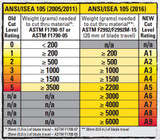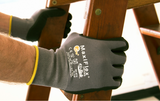Blog
Understanding the New ANSI/ISEA 105 (2016) Hand and Arm Protection Cut Level Classification
In recent years, rapid technology advancement allowed manufacturers to create more sophisticated yarns that improved glove performance significantly. Cut-resistant gloves and sleeves are designed to protect hands and arms from direct contact with sharp objects made of metal, ceramic, or glass. Cut level protection is ensured by a combination of the material’s composition and thickness. The level of cut protection can be increased by using high-performance materials (Kevlar, Dyneema); com
…
Sep 2nd 2016
ISEA Announces Revised ANSI/ISEA 105 Hand Safety Standards
Revised ISEA Hand Protection Selection Criteria Guides End-Users and Specifiers
The International Safety Equipment Association (ISEA) has received American National Standards Institute (ANSI) approval for ANSI/ISEA 105-2016, American National Standard for Hand Protection Classification, with cut-resistance testing and updated corresponding classification levels as key focus areas.
ANSI/ISEA 105-2016 was prepared by the Hand Protection Group of the ISEA and reviewed by a conse
…
Jul 28th 2016
Protect Your Hands With HexArmor
The most common injury among all construction and industrial workers is a hand injury. Makes perfect sense. Our hands are the tools we use most often. And we've all probably put them places we shouldn't. To better protect your important assets, new gloves from
HexArmor have been added to our PK Safety site.
Glove science has made big advances over the past 10 years. Didn't realize there was such a thing as glove science? Well there is. We send our Customer Service Reps
…
Jan 26th 2015
The Best Gloves for the Cuts, Abrasions, and Chemical Hazards
There are a thousand type of work gloves on the market these days. Gloves for highly specialized manufacturing and general assembly, and gloves to keep you from developing calluses on your hands while digging a hole. Sometimes they work and sometimes they don't. The more you know about gloves, the easier it is to find the one that will work best for the type of work you do.
The first thing to think about when choosing the right glove is to identify the kind of hazards you are exposed to
…
Nov 13th 2013





